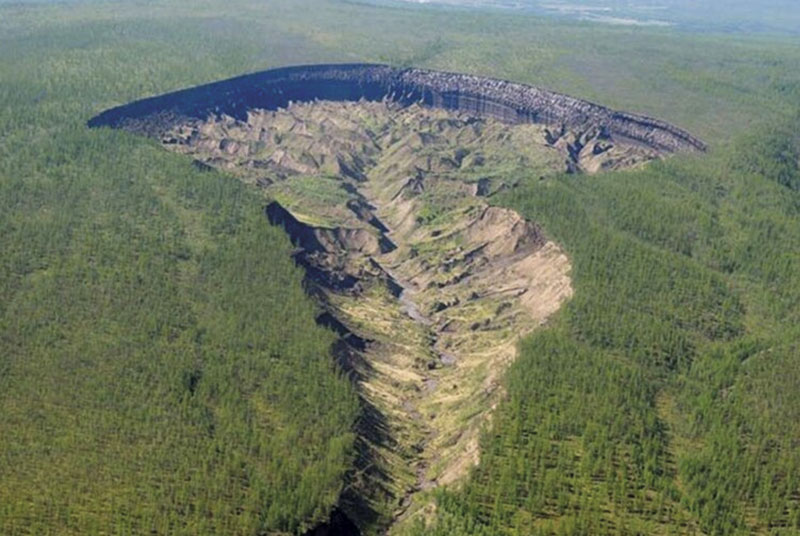
Pavel Pavlenko / Google EarthThe edges of Batagaika crater are collapsing and releasing between 4,000 and 5,000 tons of carbon per yearPavel Pavlenko / Google Earth
The Batagaika crater in northeastern Siberia, Russia, is nicknamed the “gateway to the underworld” due to its immense depth, which is increasing as the surrounding ice melts. The region is covered by permafrost — a layer of soil that remains frozen for two years or more. In the Batagaika crater, the ice now melting may have been frozen for up to 650,000 years. Measuring almost one square kilometer and 85 meters deep — making it the largest crater in the world — it is losing around one million cubic meters of ice per year, according to researchers at Lomonosov Moscow State University, Russia. The result is that between 4,000 and 5,000 tons of carbon are being released annually. This is an alarming situation, since the permafrost covers an area of around 15 million square kilometers (the equivalent to all of South America, excluding Argentina) and is estimated to hold three times the amount of carbon as all living plant matter on the planet. The melting of the permafrost, which is already beginning to reveal other craters, could have serious consequences on the global climate (LiveScience, May 6; Geomorphology, June 15).
Republish